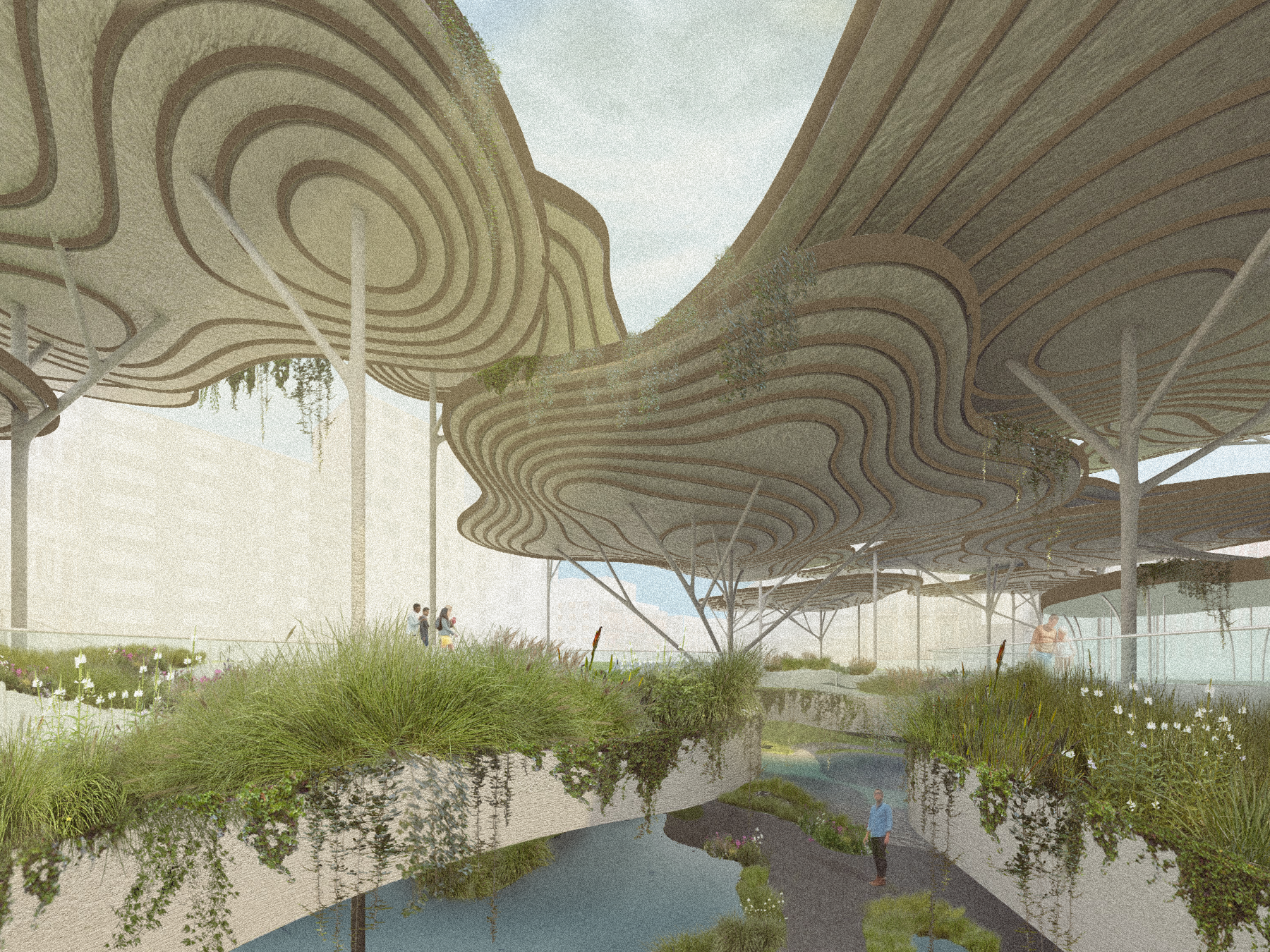Challenge: In a world where climate change disasters strike indiscriminately across a region, how can a single piece of architecture affect an entire community? From this, infrastructure can have a measurable impact on a city’s resiliency, but these critical components are often hidden away. Meanwhile, gathering locations are often easily destroyed in a disaster. How can the investment in infrastructure be turned into a greater resource for the public? And how then does it return gracefully to nature when it is no longer necessary? This project seeks to answer these questions by combining wastewater treatment with a social brewery.
Partner: Eric Johnson
Professor: Ulrike Heine, Amy Trick, Rayshad Dorsey
ARCH 8510
Approaching Render
Site Analysis
How can we make critical infrastructure become a place that desires to be occupied?


The first goal was to be able to produce a piece of infrastructure that could benefit everyone in the town. To do this, we created a wastewater treatment plant. The primary piece of that architecture are the tanks that are used to store and process the wastewater. Next, we wanted to create a reason for people to interact with the heavy infrastructure side of architecture and help invite and spark people’s curiosity. To do this, we incorporated a brewery. The brewery shares similar architectural typologies and systems that can seemingly be integrated by using the clean water that was just produced on site. Now that we have both of the awesome systems working together, we need to think how people could use the site and how the town could make it their own. Gathering spaces were included to make areas for farmers markets, concerts, and hang outs for the town. They are overlapping with the heavy systems that are in place and are working to wrap around and peek through the process that are normally tucked away.
The site, being on the coast of South Carolina, also offers an interesting opportunity to include oysters into our project. Oysters are Earth’s naturally occurring waste water filters. They are able to take the nasty things out of water and push back out heath cleaner water for the environment. They also only grow on top of other oysters. They gather together to create clusters of oysters. They are the backbone of this project providing the assurance that filtration and gathering can come together to create something beautiful and functional.



Physical Model

Structural section
Artist Section Perspectives
View from Marsh

Ground Floorplan

First Floorplan
Physical Model from Above







